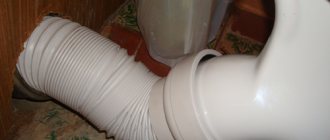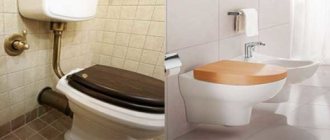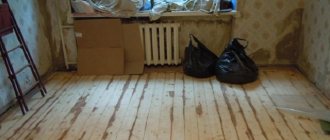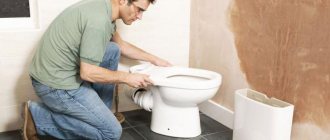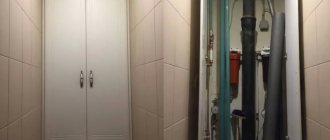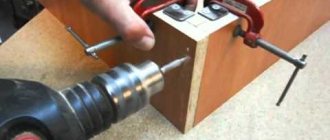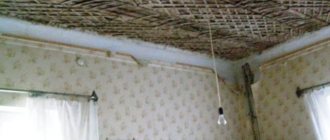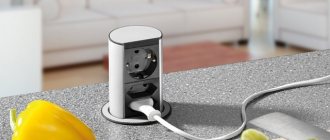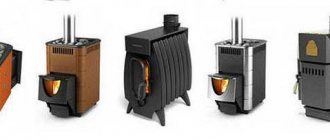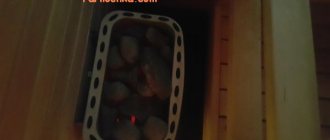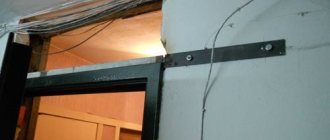Lightweight but durable plastic plumbing fixtures have greatly simplified the installation of many appliances. In particular, the corrugation for the toilet allows you to connect the outlet of this type of plumbing to the sewer outlet much faster and without much difficulty.
Do you want to install the corrugation yourself? We will tell you how to do this - the article discusses the procedure for installing corrugations and options for connecting toilets with different types of outlet. Installation tips and recommendations for choosing the best corrugation are also provided.
Thanks to a detailed analysis of important nuances, the connection procedure is quite accessible even to a non-professional.
Features of choosing corrugations for a toilet
The corrugation that is installed on the toilet, or in other words the cuff, is an intermediate part, with the help of which the toilet is combined with the sewer system. It looks like a pipe with a wide diameter and a corrugated wall.
Thermoplastic is the main material from which the cuffs are made.
- There is a cuff on the edge of the element, which is designed to more effectively combine the structural elements.
- The sleeve has a length from twenty-three to fifty centimeters.
- The part of the corrugation that is installed on the toilet has approximately the same diameter as fourteen centimeters on the outside and seven and a half centimeters on the inside.
An end having a diameter of eleven centimeters is connected to the sewer system.
Quality of corrugated pipe
Replacement of corrugation.
Modern plumbing stores have a large selection of corrugated pipes for
toilet repairs, varying in price and quality. But is it worth shelling out for expensive products or can you get by with cheap ones? Research by experts in the field of plumbing equipment will help answer this question. The experiment was carried out as follows: cuffs from corrugations from different manufacturers were put on a regular pipe one by one.
Article on the topic: Redevelopment of a two-room Khrushchev into a three-room apartment
It turned out that cheap, low-quality corrugation does not fit tightly to the inner walls of the pipe and forms waves, which (according to experts) intensify over time, which inevitably leads to leakage. In addition, during the repair process, with minor bends, the corrugation can easily become deformed. It was also noticed that the cuff skirt of some products is not straight, but cone-shaped, which is completely unacceptable. More expensive products, especially imported ones, are considered to be of higher quality, so they are necessary for a good repair.
To carry out repair work, you should call a specialist. When replacing pipes, knowledgeable people advise monitoring the actions of the plumber, because good specialists are rarely found in this matter. However, even with correct and careful installation, low-quality corrugation still very quickly becomes unusable. It follows from this that there is no need to save on materials, otherwise you will have to make repairs again and again. It is important to note that when calling a plumber, it is advisable to ask not only about the cost of the material, but also about its manufacturer. A qualified master will always give a specific and detailed answer to any question related to his field of activity.
Advantages of using corrugation
The main positive properties are the budget price, as well as ease of installation. Basically, installation of corrugations is resorted to in cases where a discrepancy between the diameters of the sewerage system pipe and the toilet outlet elements is detected.
Also, if you are going to change the position of the toilet in relation to the sewer pipe, the corrugation will be an indispensable part. You can also use the cuff when the repair has not yet been completed, but the toilet needs to be used.
In such a situation, the corrugation is a temporary part until you finally fix the toilet. However, remember that corrugation is definitely not the strongest element. If glass elements or ceramic fragments get into contact, the cuff can easily be damaged.
Check the angle at which you install it, whether there are any incorrect bends, otherwise blockages in the toilet will inevitably occur. The corrugation is a part that should only be used in open installation; never place it in the wall.
Installation procedure
The operation of replacing a flexible fitting on a toilet consists of the following steps:
- removing old corrugation;
- preparing seats for installation;
- installation of a new flexible pipe;
- sealing joints from the outside.
How to remove the old connector
If the sewer system is installed from plastic pipes, then removing the worn-out corrugation is easy, even in a situation where this needs to be done without dismantling the toilet. To connect the fitting to such a fan system, additional sealants are rarely used, and dismantling the adapter is reduced to elementary operations.
First of all, you need to shut off the flow of water into the toilet and empty the flush tank. Removal of the fitting begins from the side connecting to the sanitary fixture. The corrugated section is compressed towards the sewer, after which the cuff is pulled off the toilet flush and the other end of the product is removed from the socket.
When the toilet is located close to the inlet neck, and the corrugation in the working position is already compressed, then to simplify dismantling it is cut across. If the old cuff does not pull off the pipe, it can also be cut with a hacksaw blade for metal.
On a cast iron fan system, the place where the corrugation is connected to it can be additionally coated on the outside with a layer of cement mortar or other sealing compound.
Here, when removing a fitting, only those methods are good that will not cause harm to the toilet - the solution can be carefully crumbled using a plumber's screwdriver and a hammer, and the silicone can be cut with a narrow knife. After exposing the connections to the sewer and toilet, the fitting is dismantled, and the opened seats are thoroughly cleaned of old seals and sealants, otherwise their fragments will interfere with the tightness of the new connection
After exposing the connections to the sewer and toilet, the fitting is dismantled, and the opened seats are thoroughly cleaned of old seals and sealants, otherwise their fragments will interfere with the tightness of the new connection.
How to install
Install the corrugation in the reverse order.
The pipe with transverse sealing rings is inserted into the receiving neck of the pipe. It would not be superfluous to apply sealant to the rings before this - this will protect against leakage when the riser on the lower floors becomes clogged. The folds of the fitting are pressed against the socket, after which the cuff is combined with the toilet flush and pulled onto the pipe - this will be easier to do if the rubber seal is lubricated from the inside with a soap solution.
With sewage systems made of cast iron pipes, the operation is complicated by the fact that the connection point to it most often needs to be additionally sealed or a special adapter installed from cast iron drain fittings to plastic ones.
How to shorten a corrugation
Sometimes it happens that the model of flexible fitting you like in the store is longer than necessary. The way out is to shorten the corrugation with your own hands, and this is done as follows:
the flexible part of the pipe is pulled out of the cuff (the factory connection is adhesive), and the vacated mounting groove is cleaned of glue residues;
- the fitting is tried on in place and a transverse cutting line is marked on the side of the free end;
- excess length is cut off from the pipe (in reinforced products, cut through the wire running in the folds of the corrugations in a spiral);
Fill the mounting groove of the cuff with sealant and insert the resulting end of the pipe there;
After the compound has cured, the corrugation is ready for installation.
After the flexible adapter is installed, to reduce the likelihood of leakage, you need to coat the outside joints of the cuff with the drain and the outlet end with the neck of the sewer with sealant. This will not make the corrugation stronger, but will increase the tightness of the connections.
Installation errors
The list of mistakes that are made when installing corrugations for toilet bowls is small, but all of them are fraught with troubles in the future:
Carelessness in arranging joints and neglect of additional sealing.
Excessive stretch of pipe in working position.
It increases the tensile load and over time leads, at a minimum, to sagging of the adapter, and rupture of the corrugation is not excluded.
Excessive compression of the corrugated part.
It complicates and sometimes makes it impossible to replace the fitting without dismantling the toilet.
Sharp corners in the pipe configuration after its installation.
Sharp bends cause blockages and destroy the corrugation on the outside of the bend.
When to install a toilet corrugation
Corrugation is not used in all cases when it becomes necessary to combine a toilet with a sewer pipe. A corrugated type connection will be indispensable when the toilet is not installed directly opposite the sewer pipe, if the floor height has changed during the repair work.
Have you started rearranging your bathroom and the position of the toilet has changed? Then the corrugation will come to the rescue here too. In an older building, when updating the plumbing, a problem may inevitably arise such as a mismatch between the designs of the toilet and the sewer system.
A blockage has formed
Such an unpleasant thing as a clog in the sewer is known to the vast majority of homeowners. This is especially true for apartments where old pipes are installed and the sewer system is used incorrectly. The appearance of blockages is caused by the ingress of hair, dirt, grease, as well as undissolved detergents - shampoos, lotions, balms, soaps and others into the pipe.
It's best to try cleaning the toilet first using a plunger. You need to install it as tightly as possible to the drain and press several times. This method is effective if the clog is small and the particles in it are small.
If everything is not so simple, and the size of the plug is large enough, and it itself is covered with a layer of fat, then the plunger is useless. You can use a chemical to unclog the drain. There are currently quite a lot of such products in the relevant stores. They usually contain acids and alkalis, which dissolve blockages in the pipe.
This product is simply poured into the pipe. To dissolve the cork, you need to wait at least 4-5 hours. After this, hot water is poured into the pipe. It is best to do this at night, as this is when the plumbing is used the least, and the product will have enough time to clear the clog.
You can use a mixture of soda and vinegar (you need to take 1 bottle for 1 pack). The effect of such a mixture will be similar to a chemical agent. After using both ready-made and home-made solutions, you must also use a plunger.
All of the above methods are good for removing fresh clogs. If fossils form in old pipes, they are unlikely to help. Then a metal cable may come in handy. It is placed in a pipe and rotated, gradually moving deeper. This can help with grease or hair clogs, but if, for example, spoiled pickles have been flushed down the toilet, or a sanitary pad has been thrown away, the cable is also powerless.
If you cannot get rid of the blockage, it is better to ask professionals for help. You need to call the housing department and leave a request. There are also paid services that tend to respond more quickly and have all the necessary tools to fix problems. In difficult cases, blockages are cleared using special hydro-pneumatic-impulse equipment.
How to choose the right corrugation for a toilet
When choosing corrugations, check the required diameters. It will be easier for you if you buy the cuff along with the toilet. Decide on the length of the pipe. From the many models of corrugation, choose exactly the one that suits your function.
- There is a cuff with an outlet - this is an option for a combined bathroom with a small area.
- The tap will allow you to connect another object.
- A rubber cuff can also be very convenient.
- Don’t go after the cheapest corrugation, they are all inexpensive.
The main thing in this matter is quality. Pay attention to imported products, they are tougher and reinforced with metal wires.
Practical recommendations
Do not stretch the corrugation before installing it on the toilet. This can only be done immediately before starting installation work. If you stretch the corrugation too much, it will be difficult to return it to its original state.
Do not use corrugated pipe as an additional shelf for various household items
If you place a heavy object on it, it may burst.
When buying corrugation, pay attention to the thickness of the walls: the thicker it is, the longer the product will last. In addition, try to buy products from European manufacturers
They are more expensive, but their quality is significantly higher than that of their domestic and Chinese counterparts. If you are the happy owner of your own home, then you should seriously think about the need to use plastic corrugated pipes. The fact is that mice, rats and other small rodents consider plastic a very tasty product. If these uninvited guests are noticed in your home, then you better opt for metal pipes.
Related article: Making a sun lounger out of wood with your own hands: progress of work, drawings and photos
A corrugated pipe for a toilet bowl can be a real salvation in difficult situations related to mismatches in the parameters of the connected equipment. Like any other modern technical solution, it has its advantages and disadvantages. Use light and elastic corrugation or use more bulky, durable and long-lasting connection methods – it’s up to you. But whatever your decision, we hope that our article helped you make the right choice.
The best posts
- How to make a plasterboard box in the bathroom - step-by-step instructions
- Drywall figures or how to make the interior stylish and fashionable
- DIY decorative corner fireplace made of plasterboard
- Wiring under drywall: lay it out correctly
- Painting drywall - step-by-step instructions
- How to join drywall in corners and the process of building a decorative niche
- Socket boxes for drywall: correct selection and installation
- Sealing drywall joints - recommendations from professionals
Additional elements during installation
In order to effectively install a corrugated connector, carefully select the coupling; it is necessary to combine the corrugation and the sewer pipe. The pipe, in turn, is necessary to correctly install the toilet in the event that its position moves relative to the elements of the sewer system.
The choice of a soft corrugation or one with a more rigid structure is determined by the need to bypass obstacles in the way of connecting the sewerage system and the toilet system. Do not choose a corrugation that is too short, do not stretch it. By squeezing or sharply bending it, you risk future breakdowns.
What else should you pay attention to?
If all installation operations are carried out carefully, then there will be no problems with the subsequent operation of the plumbing equipment. However, it is worth paying attention to a number of points.
- A corrugated sleeve will last a long time if its length is chosen correctly. The product must not be installed in a fully extended or excessively compressed state, nor should it be allowed to bend sharply at turns. In the latter case, when space for the adapter is limited, a toilet eccentric can often be used instead.
- The sleeve should not sag, otherwise a pocket will form in which deposits will begin to accumulate. This can lead to blockages in the drain or rapid rupture of its plastic walls. To avoid such consequences, you need to use auxiliary support clamps, stands, etc.
- The corrugated plumbing adapter is a product intended for external installation only. It is not allowed to be walled up in the structure. This should be remembered, as well as the fact that sooner or later it will have to be changed, therefore, it is important to provide for the possibility of access to it.
Finally, it is worth recalling once again that when deciding how to choose a corrugated hose for connecting a toilet, you should initially consider the possibility of using any other rigid analogues from corners, swivel connectors or eccentrics. The strength of flexible adapters is quite limited, so the product can be damaged not only by hard sharp objects, but also gradually destroyed by natural wear and tear due to thinning of the walls.
Related posts:
- Why do you need a vent pipe?
- Water supply collector: what is it, how to choose and install it correctly?
- How to install a toilet: practical advice on installation and setup
The process of dismantling the old toilet corrugation
If you need to install a new cuff to replace the old one, there are a few things to keep in mind. First, drain the water from the tank and shut off the water supply system. Remember that the connector of the corrugated version is not rigid; water remains inside it.
Therefore, first of all, disconnect the toilet end of the corrugation, so you can easily drain the liquid into the sewer system.
Pay special attention to this if you are dealing with a stretched connector or one located at an angle. If the corrugation is compressed, you will have to first remove the toilet. Please take this into account during subsequent installation.
Tighten loose bolts
Another reason when a toilet leaks at the junction is the loosening of the tank mounting bolts. They are usually metal or plastic. While the former can rust and break, the latter simply burst over time due to static load or if someone rests on the tank.
The problem is solved by replacing the bolts with new ones, and to do this you need to proceed as follows:
- turn off the water supply to the tank and empty it;
- unscrew the flexible supply hose;
- remove the bolts (if they are rusty, this will not be easy, but be careful not to damage the fragile tank);
- insert new bolts with spacers into the holes and tighten (just do not overdo it).
If it is still leaking at the joint, you will need to tighten the bolts a little more to seal the toilet. The main thing is not to squeeze it so that nothing bursts or cracks.
Do-it-yourself corrugation installation (step-by-step instructions)
So, you have removed the old corrugation. Inspect the new corrugation for defects; they could have arisen both during transportation and during storage. Check that the length of the corrugation corresponds to the required distance.
If you also updated the toilet, first attach the cuff to the toilet element, then after installing the toilet, connect it to the sewer system.
- Don't forget to clean the system of any dirt remaining from the previous connector.
- Surface degreasing can also be done if it is provided for in the instructions for new plumbing items.
- Now install the drain pipe on the toilet outlet.
- The actual process of installing the cuff consists of applying a sealant composition to the toilet outlet and putting on a corrugated connector.
The walls of the corrugation should overlap the toilet element by 5-6 centimeters. Make sure the corrugation is installed evenly. Install the toilet together with the corrugation and connect them to the sewer system in the same way. The use of sealant is necessary to ensure the reliability of the structure and the absence of leaks.
How to calculate the diameter depending on the specific use of structures
The parameters of sewer pipes largely depend on where exactly they will be installed. To install the system in an apartment or private house with an average amount of plumbing equipment, a structure measuring 100 mm is sufficient.
What should be the diameter of sewer pipes in the kitchen? Designs of 40-50 mm in size are suitable for the sink. 50 mm is the optimal parameter for products for installation in the kitchen. Firstly, the shaped parts of the sink are designed for it. Such parameters allow you to achieve maximum compatibility of communications. Secondly, it provides high-quality drainage of waste from the kitchen sink.
In bathrooms, a sufficient pipe diameter is 50 mm. This is enough to provide the required throughput. The parameters for installing the structure under the washing machine depend on its technical characteristics. The dimensions of the drainage product should not be smaller than the dimensions of the drain hose of the washing equipment.
Typically, most plumbing fixtures are located in the kitchen. For a sink and sink, a 50 mm outlet will be sufficient. For a washing machine, 32 mm is enough. Dishwashing equipment in the kitchen will require a structure measuring at least 40 mm.
You can see which products are best installed for certain needs in the photo.
Additional recommendations
Knowing the required diameters of sewer pipes for a toilet, bathtub, and so on is not everything
It is also important to know information about the features of certain structures and the specifics of their installation:
- The internal parameters of cast iron structures gradually decrease due to deposits and silt formation;
- Plastic structures retain their internal parameters even after many years of use due to the smooth surface on which fat and other deposits do not accumulate;
- To install systems in a 5-story building, structures measuring 100 mm are used, for multi-story buildings - 150 mm.
You can supplement the information provided about the recommended parameters of sewer structures by viewing photos.
Sealant for toilet bowl corrugation
In order to attach the corrugation, use a product designed for working with plumbing structures - sanitary. This composition will ensure maximum tightness - no fungus will penetrate between the elements.
Do not throw away the instructions for the product, follow them carefully. In order for the sealant to dry effectively, do not move the parts; they must be completely at rest.
With these tips, you can easily choose and install the corrugation on the toilet yourself. This way you will save money without contacting a specialist, and you can easily understand the situation if installation is necessary.
What are the benefits of guava?
Guava is a delicacy and a medicine. Its therapeutic effect is recognized by official medicine, prescribed to patients by healers in the East, and used by cosmetologists.
Health
Guava improves the functioning of the body physically and emotionally:
- Vitamin C in large quantities is a powerful immunostimulant.
- Bones, swallowed whole, eliminate constipation and improve digestion. Tea made from the roots of the plant stops diarrhea.
- The seedless pulp is used to treat dysentery and food poisoning.
- Juice of unripe fruits or a decoction of leaves is used to gargle for sore throat and other infections of the oral cavity; Warm drinks are given for coughs as an antipyretic.
- Exot is endowed with anti-inflammatory properties. It is prescribed for pneumonia.
- The heart rhythm is adjusted, the pressure is normalized.
- Fruits in the diet prevent or inhibit cancer. The effect on the cells of the prostate, mammary glands, and oral cavity is especially effective.
- Vitamin A slows down the degradation of vision, prevents cataracts, and improves the general condition of the eyes.
- The high copper content helps produce collagen and normalizes the production of blood cells. Regulates the functioning of the thyroid gland.
- Cholesterol is reduced, blood clots are prevented, and blood pressure is reduced.
- Fruits help overcome stress, survive difficulties, and overstrain at work.
- Crushed leaves of this tree are applied to fresh wounds, abscesses, and chewed for toothache.
beauty
A tropical apple improves the condition of the skin and hair, making it beautiful and healthy:
- Masks made from pulp remove oily shine, tighten pores, and refresh the face.
- You can wash your face with a decoction of leaves, peel or pulp of unripe fruits.
- Rinse your hair with freshly squeezed juice.
Photo of the best corrugation for the toilet
Connection tool
As noted above, installing a toilet in a sewer is not particularly difficult if you have the appropriate tools and components; for installation you will need:
- A wrench or adjustable wrench for screwing fastening hex bolts and flexible connections to a ball valve on a water supply system.
- Metal saw – needed for cutting polyvinyl chloride (PVC) pipes to the required size with rigid fasteners.
- A hammer drill with drills of a suitable diameter for tiles and concrete is necessary for attaching the bowl to the floor.
- Fittings, flexible connection to the toilet for supplying cold water.
- Dowels and hexagon screws, fasteners are usually included with the new device.
- Pipes, corrugations, eccentrics, cuffs, adapters and other shaped elements with which the toilet is connected.
